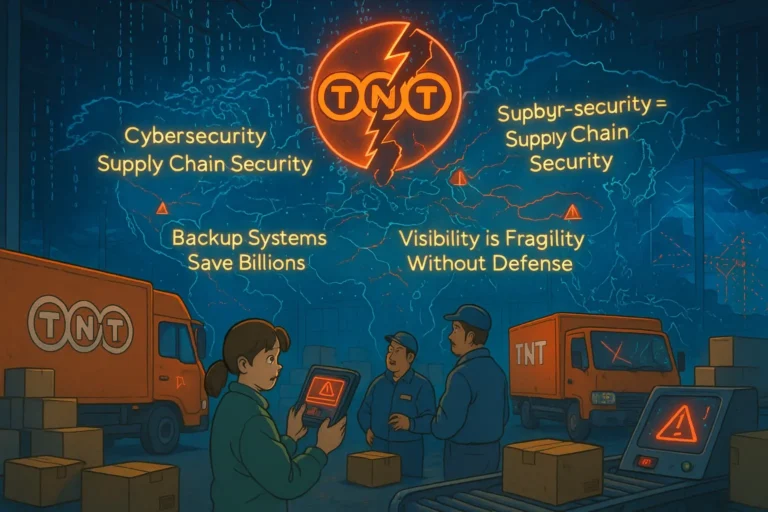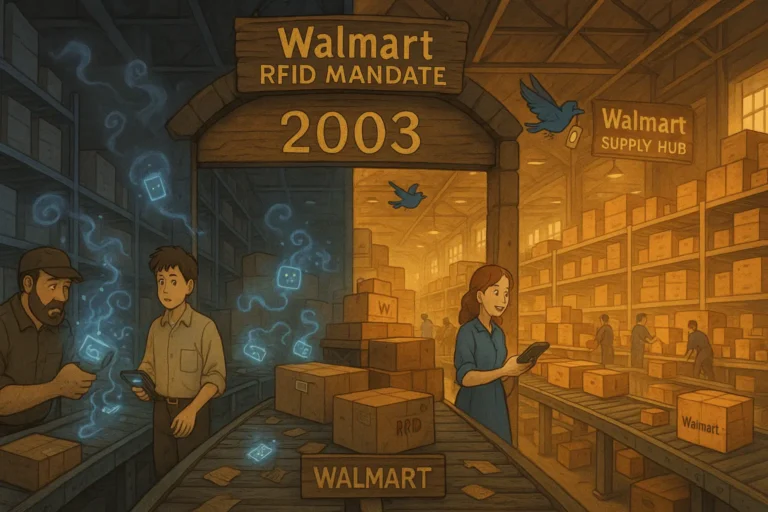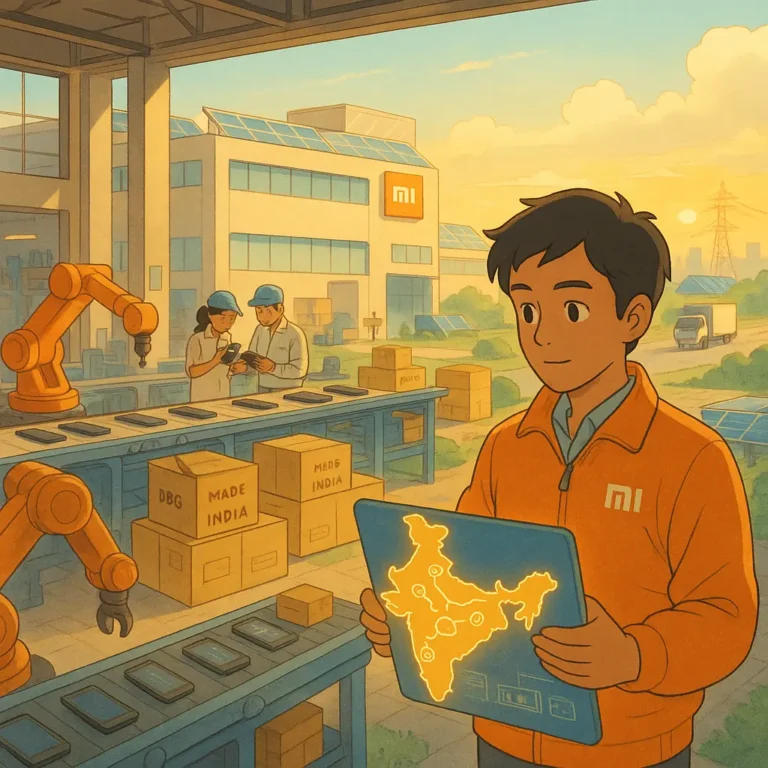
DHL's warehouse robotics
DHL’s warehouse robotics transformation was driven by a surge in e-commerce demand and severe labor shortages.
Article Brief & Key Nuggets
- With partners like Locus Robotics, DHL deployed autonomous mobile robots (AMRs) to increase picker productivity by over 100%.
- Robots helped workers reduce walking, cut errors, and complete orders faster, reaching over 500 million robot-assisted picks by 2024.
- DHL utilized a Robotics-as-a-Service (RaaS) model, enabling it to scale quickly without incurring massive upfront costs.
- Lessons include targeting the right warehouse functions, designing robots to support people, and preparing for scalable automation.
- African supply chains can learn from DHL by starting small, partnering smartly, and building workforce-ready robotics programs.
A New Truth About Warehouse Innovation
Most companies wait too long to innovate their warehouse operations. But can you blame them? Sometimes it can be a pain to change what is already working, which is why companies stay locked in manual systems until it becomes too painful. DHL didn’t fall into that trap.
In the U.S. and Europe, the logistics giant saw the cracks early. Orders were climbing, labor was thinning, and customers were demanding faster shipping. Instead of patching the problem with short-term fixes, DHL made a permanent shift with warehouse robotics transformation.
However, this wasn’t just a change in tools. It was a rebuild of warehouse logic, from how workers picked goods to how robots ran errands inside the aisles. What set DHL apart was its choice to scale autonomous mobile robots in warehousing before others.
It wasn’t a gimmick. It was survival. And it turned out to be the best move of the decade.
Why DHL’s Warehouse Robotics Was An Urgent Decision
Global package deliveries increased by over 50% between 2018 and 2020 and continue to rise, with same-day delivery becoming increasingly commonplace.
DHL faced two pressures: increased online shopping and a labor shortage. And everything went haywire when the pandemic occurred. The pandemic didn’t just raise order volumes; it broke the hiring pipeline.
Warehouses in the U.S. and Europe struggled to find and retain staff. As a result, orders piled up, shifts dragged on, and mistakes were costing the logistics behemoth its customers. DHL’s CEO, Oscar de Bok, warned that “the shortage of warehouse workers” was a growing threat.
And DHL couldn’t afford to wait. The company needed a way to handle more orders faster with fewer personnel.
The strain was most evident in picking. Workers were forced to walk 10 miles a day, pushing carts; some had to push loads of medical gear or heavy clothing, while others had to decipher labels or switch between language screens.
It was inevitable when fatigue began to creep in. What followed was a significant increase in the number of errors in the company’s warehousing operations. DHL’s logistics leadership needed a way to keep the team sharp without burning them out. And robots offered a clear fix.
Read more: Learning From the Mondelez Trucking Crisis of 2018.
How DHL Built Its Robot-Ready Warehouses
The fix started in 2017. DHL ran a small trial with Locus Robotics at a medical device warehouse. The test demonstrated instant value, with 50% fewer pick errors and a 60% reduction in order times. That was all the proof the company needed.
By 2021, DHL had signed a global deal with Locus. The goal was bold: 2,000 robots across the U.S. and Europe. Although that was expected, as the contract made Locus the logistics giant’s biggest partner.
But it wasn’t the tech alone that made it a notable story. It was the way DHL rolled it out. That made all the difference.
1. DHL Picked the Right Jobs to Automate
DHL utilized AMRs for tasks involving high motion and minimal cognitive demand, such as picking, sorting, and unloading. Locus Bots carried totes while DHL Bots sort packages. Boston Dynamics’ Stretch robots unloaded boxes from trucks.
Essentially, robots did the walking while people performed the checks. In each warehouse, DHL chose workflows where robots could save hours without needing full autonomy.
2. DHL Kept People in Control
Each Locus Robotics DHL bot had a screen that showed the worker’s name, order steps, and instructions in 21 languages. A picker could stand in place while bots came and went.
The entire setup was designed to ensure that workers would not lose their jobs. However, they did experience relief from leg pains. People were given control over the entire system, allowing them to work smarter and increase warehouse efficiency.
And to make the entire rollout more engaging, DHL even incorporated gamification, with robots tracking picks, displaying scores, and boosting morale.
3. DHL Scaled Operations With Robotics-as-a-Service
DHL paid for the bots like a subscription, robotics-as-a-service logistics. That meant no giant upfront cost. They could add bots before peak seasons and then scale them down later. That agility mattered when the world shifted overnight during the pandemic.
4. DHL Linked Robots to Real-Time Systems
Each robot synced with DHL’s warehouse software. As a result, inventory counts stayed accurate. If a worker picked a return, the robot tracked it. If a pallet needed restocking, robots ferried it during slow periods. Even putaway tasks got covered.
Read more: How In-N-Out navigated the onion shortage of 2021.
The Impact of DHL’s Warehouse Robotics Productivity and Accuracy
The stats tell the story. At one site, DHL doubled picking productivity. In another, robots handled 500 million assisted picks by mid-2024. At nearly every site, the number of picking errors decreased by 50%. And the speed improved too.
Orders that once took hours to ship moved out in under half the time.
Some facilities eliminated the packing step altogether by letting workers pick straight into boxes. The gains weren’t just numbers. They changed how warehouses felt. Workers were less tired, they stayed longer, and seasonal hires learned the job faster—some in just a few hours.
With fewer injuries, fewer walkouts, and higher accuracy, DHL achieved significant time and cost savings. Moreover, it earned the loyalty of its teams and the trust of its clients.
Lessons From DHL’s Warehouse Robotics Adaptation and Implementation
DHL didn’t win by buying shiny machines. It won by making smart moves at the right time. And that matters more because:
1. Make Robots Helpers, Not Replacements
People worked better with AMRs because the robots carried the weight. It is essential to design automation that supports your team, without sidelining anyone.
More than ever, it is clear that technology is not meant to replace humans but to help them manage the entire process much more efficiently, especially in logistics and supply chain operations.
2. Start with Small, Painful Tasks
You have to prove that it works before expanding.
Don’t try to automate everything at once or in the beginning. It can quickly become overwhelming, which may ultimately harm operations. You will be more efficient if you focus on what slows your people down, such as long walks, heavy lifts, and mis-picks.
3. Lease Before You Buy
With robotics-as-a-service, DHL paid monthly for bots. That allowed them to test without risking millions of dollars. You can adopt similar strategies.
4. Train Smarter, Not Harder
With intuitive screens and fewer decisions, new hires needed less coaching. This is why it is vital to select technology that reduces the training curve and enables people to start working quickly.
5. Stay Ready to Pivot
During the pandemic, DHL shifted bots from picking to returns. Design your system with flexibility. Don’t lock robots to one task.
Read more: How Shoprite Holdings’ Supply Chain Disruptions Forced Its Exit From Nigeria.
What African Supply Chains Can Learn
Warehouses in Africa face their own unique challenges: rising online shopping, inadequate infrastructure, and unpredictable demand. However, they also have the opportunity to avoid the mistakes others made.
Here’s how to avoid the same squeeze DHL faced:
- Start lean with pilot projects: Pick one major city. Choose one task, like picking orders at a fashion hub. Lease a few AMRs. Test the model.
- Partner with local or proven global tech: You don’t need to invent new bots. DHL worked with Locus. African firms can partner with RaaS providers or start-ups ready to localize.
- Train for adoption early: Use tech with local language support. Give workers ownership. Show how robots save their energy, not their jobs.
- Build for volume, not size: Design your warehouse layout to suit robot paths. Leave room for chargers. Use data to move bots to peak zones.
- Be flexible with function: Bots can do more than pick. They can sort, stock, scan, and return. Build systems that adapt to shifting orders.
Final Thoughts: This Is the Quiet Revolution
By 2030, up to 30% of DHL’s global equipment is expected to be robotic. That’s not a guess. It’s a direction. The company has already hit 500 million robotic picks in under five years. The DHL AMR implementation didn’t just fix a labor shortage. It rewrote how warehouses think.
DHL’s warehouse robotics isn’t just about the application of robots. It’s about readiness. The companies that act now will thrive when demand spikes again. The ones who wait may not. In Africa, now is the time to build the warehouses that carry themselves.
You can start with your very next shipment.

Obinabo Tochukwu Tabansi is a supply chain digital writer (Content writer & Ghostwriter) helping professionals and business owners across Africa learn from real-world supply chain wins and setbacks and apply proven strategies to their own operations. He also crafts social content for logistics and supply chain companies, turning their solutions and insights into engaging posts that drive visibility and trust.







